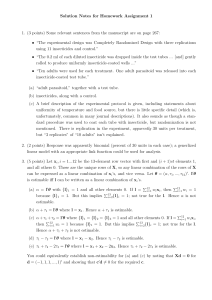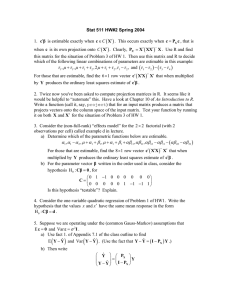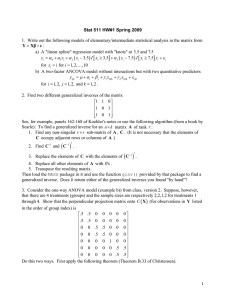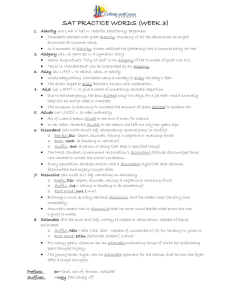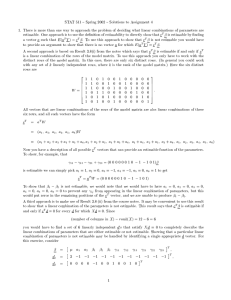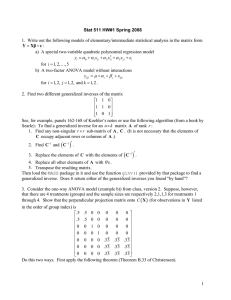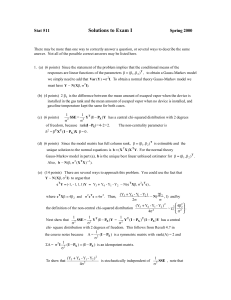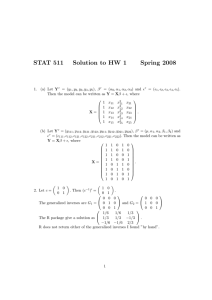A comment about estimable functions in linear
advertisement
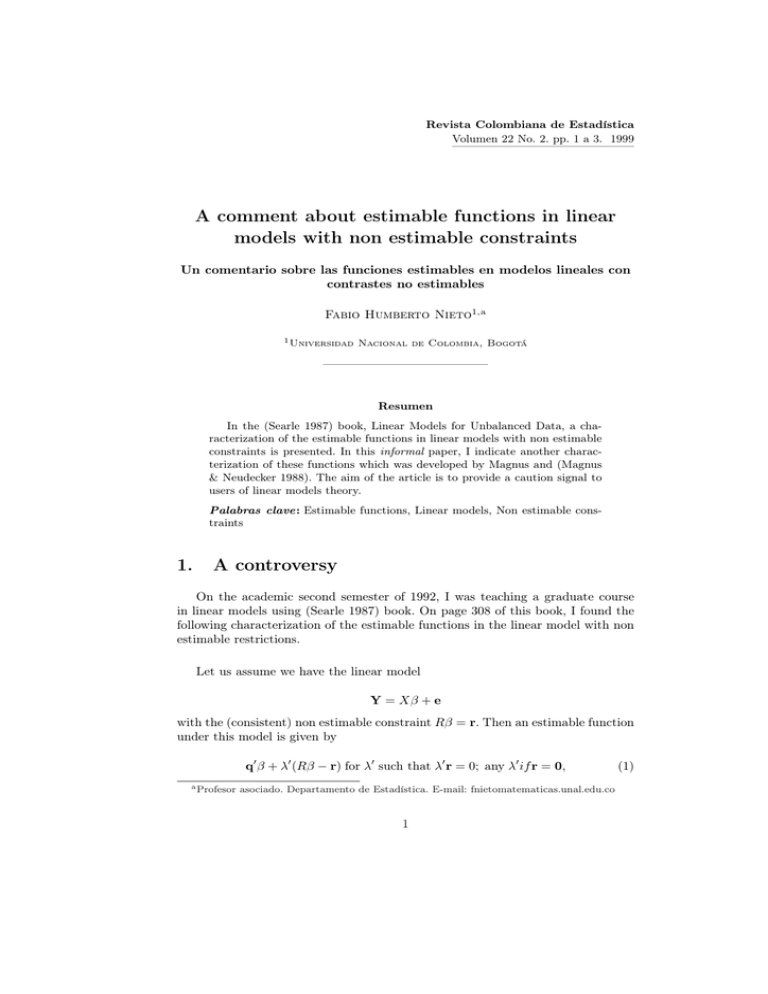
Revista Colombiana de Estadística Volumen 22 No. 2. pp. 1 a 3. 1999 A comment about estimable functions in linear models with non estimable constraints Un comentario sobre las funciones estimables en modelos lineales con contrastes no estimables Fabio Humberto Nieto1,a 1 Universidad Nacional de Colombia, Bogotá Resumen In the (Searle 1987) book, Linear Models for Unbalanced Data, a characterization of the estimable functions in linear models with non estimable constraints is presented. In this informal paper, I indicate another characterization of these functions which was developed by Magnus and (Magnus & Neudecker 1988). The aim of the article is to provide a caution signal to users of linear models theory. Palabras clave: Estimable functions, Linear models, Non estimable constraints 1. A controversy On the academic second semester of 1992, I was teaching a graduate course in linear models using (Searle 1987) book. On page 308 of this book, I found the following characterization of the estimable functions in the linear model with non estimable restrictions. Let us assume we have the linear model Y = Xβ + e with the (consistent) non estimable constraint Rβ = r. Then an estimable function under this model is given by q0 β + λ0 (Rβ − r) for λ0 such that λ0 r = 0; any λ0 if r = 0, a Profesor asociado. Departamento de Estadística. E-mail: fnietomatematicas.unal.edu.co 1 (1) 2 Fabio Humberto Nieto where q0 β is an estimable function in the unconstrained model. One deduces immediately from (1) that, for all λ, these estimable functions are the same of the unconstrained model because of Rβ − r = 0. At the beginning of 1993, I sent a letter to Professor Searle in which I indicated with all deference a possible problem whit this characterization. Gently, Prof. Searle answered to me the following argument: the point is right, i.e., one must delete Rβ − r from expression (1) and set only Rβ in its place. However, the dependence of λ on r must be maintained. I consider that this relationship between λ and r can be misuntertood. Following (Magnus & Neudecker 1988, Pág. 268) (MN), a parametric function W β is estimable if, and only if, M(W 0 ) ⊆ M(X 0 : R0 ), where in general M(A) denotes the column space of the matrix A. This fact implies that W β is estimable if, and only if, W = W1 X + Q2 R for some matrices Q1 and Q2 (compatible for the indicated products). Consequently, W β = (Q1 X)β + Q2 Rβ, where (Q1 X)β is an estimable function in the unconstrained model. In particular, if W is a row vector, then Q1 and Q2 are row vectors, too. At this point, one can note that Q2 has not any relationship with r. It depends only on Q1 ; at the bottom line, on W !. This fact is formally supported by MN’s rigorous treatment of the topic. Although less critic, we must also prevent the use of (Henderson 1984) characterization of estimable functions, in the restricted linear model whit non estimable constraints. 2. An example As in (Searle 1987, Pág. 244) book, we consider a 1-way-classification experiment with three cells, with the following number of observations per cell: n1 = 2, n2 = 2, and n3 = 3. Suppose that the parameter vector is given by β = (µ, β1 , β2 , β3 )0 and that we have the constraint β1 + β2 + β3 = 0. We can observe that the restriction is not estimable because of R = (0, 1, 1, 1) 6= Q1 X for all Q1 ∈ R7 , where X is the design matrix. We address the question: is µ = (1, 0, 0, 0)β an estimable function?. It is easy to see that under the unconstrained model the answer is no . However, in the restricted model and using Magnus and Neudecker characterization we obtain 1, 0, 0, 0) = (1/3, 0, 0, 1/3, 0, 1/3, 0)X + (−1/3)R, Revista Colombiana de Estadistica 22 (1999) 1–3 A comment about estimable functions in linear models with non estimable constraints 3 which means that in this model µ is estimable. It is worth noticing that Q2 = −1/3 does not depend on r = 0!. This value is obtained using only W = (1, 0, 0, 0), X, and R. If we use Searle’s characterization, any value for Q2 can be used because of r = 0, in particular Q2 = 0. In this case, we obtain that µ is estimable in the unconstrained model, too. But this is a contradiction. Referencias Henderson, C. R. (1984), Application of Linear Models in Animal Breeding, University of Guelph, Canada. Magnus, J. R. & Neudecker, H. (1988), Matrix Differential Calculus with Applications in Statistics and Econometrics, John Wiley & Sons, New York. Searle, S. R. (1987), Linear Models for Unbalanced Data, John Wiley & Sons, New York. Revista Colombiana de Estadistica 22 (1999) 1–3
